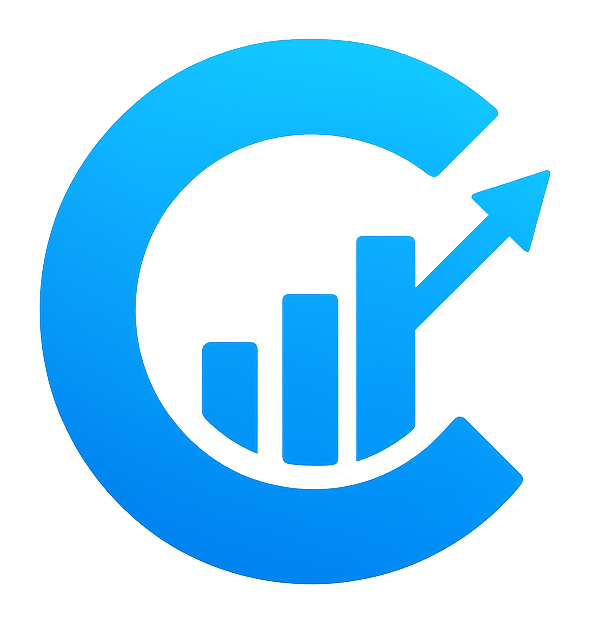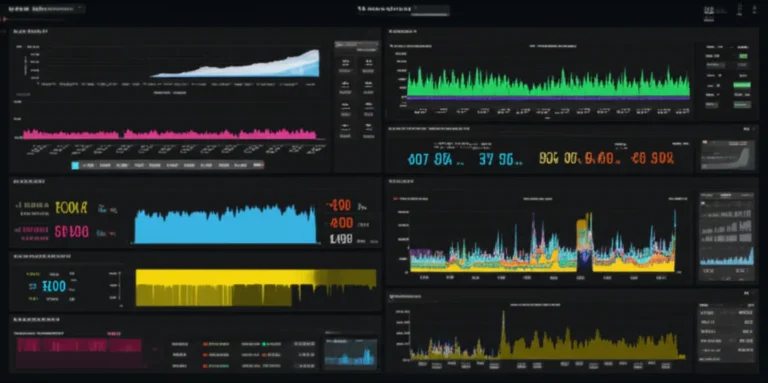Support our educational content for free when you purchase through links on our site. Learn more
How Do AI Benchmarks Evaluate Deep Learning Frameworks? 🤖 (2025)
Ever wondered how AI experts decide which deep learning framework reigns supreme? It’s not just about flashy demos or marketing hype — behind the scenes, rigorous AI benchmarks put these frameworks through their paces, measuring everything from speed and accuracy to energy consumption and robustness. In this article, we unravel the mystery of AI benchmarking, revealing the 7 key performance indicators that truly matter and sharing real-world case studies that show how these tests drive innovation and smarter AI choices.
Did you know that some benchmarks can save researchers up to 83% of their review time by identifying the best models faster? Stick around to discover the top benchmarking suites like MLPerf and AI-Benchmark, learn how to interpret their results without getting lost in jargon, and find out how you can leverage benchmarking insights to gain a competitive edge in your AI projects.
Key Takeaways
- AI benchmarks provide standardized, objective tests to evaluate deep learning frameworks on multiple fronts including speed, accuracy, and efficiency.
- The 7 critical performance indicators include throughput, latency, accuracy, scalability, resource use, robustness, and energy consumption.
- Popular benchmark suites like MLPerf, AI-Benchmark, and ASReview offer comprehensive tools trusted by researchers and industry leaders.
- Benchmarking results help you choose the right framework, optimize model performance, and reduce operational costs.
- Understanding benchmarking pitfalls like overfitting and dataset bias is crucial to making informed decisions.
- Leveraging AI benchmarks can accelerate innovation and improve AI deployment success in real-world applications.
Ready to benchmark your AI models like a pro? Dive into the full article to unlock the secrets of deep learning performance evaluation!
Table of Contents
- ⚡️ Quick Tips and Facts About AI Benchmarks
- 🔍 Demystifying AI Benchmarking: The Evolution of Deep Learning Performance Evaluation
- 🤖 Why Do We Need Uniform AI Model Performance Metrics?
- 🧰 The Technical Toolbox: How AI Benchmarks Measure Deep Learning Frameworks
- 📊 7 Key Performance Indicators Used in AI Benchmarks
- 🧪 Experimentation in Action: Real-World AI Benchmarking Case Studies
- ⚙️ Popular AI Benchmark Suites and Tools You Should Know
- 💡 Interpreting Benchmark Results: What Do They Really Tell You?
- 🚀 How Benchmarking Drives Innovation in Deep Learning Frameworks
- 🛠️ Challenges and Pitfalls in AI Benchmarking You Must Avoid
- 📚 Deep Dive: Related Research and Advances in AI Performance Evaluation
- 🔗 Recommended Links for Further Exploration
- ❓ Frequently Asked Questions About AI Benchmarking
- 📖 Reference Links and Authoritative Sources
- 🎯 Conclusion: Mastering AI Benchmarking to Unlock Deep Learning Potential
Quick Tips and Facts About AI Benchmarks
To understand how AI benchmarks evaluate the performance of deep learning frameworks, it’s essential to start with the basics. As AI researchers and machine-learning engineers at ChatBench.org, we specialize in turning AI insight into a competitive edge. For those looking to dive deeper into the topic, we recommend checking out our article on Can AI benchmarks be used to compare the performance of different AI frameworks?.
Here are some key points to consider:
- Definition: AI benchmarks are standardized tests designed to evaluate the performance of AI models, including deep learning frameworks, across various tasks and datasets.
- Purpose: The primary purpose of AI benchmarks is to provide a fair and unbiased comparison of different AI models, allowing developers to select the best model for their specific needs.
- Types of Benchmarks: There are several types of AI benchmarks, including:
- Image Classification: Evaluates a model’s ability to classify images into different categories.
- Natural Language Processing (NLP): Assesses a model’s ability to understand and generate human-like language.
- Reinforcement Learning: Tests a model’s ability to learn from interactions with an environment and make decisions to achieve a goal.
- Importance: AI benchmarks are crucial for advancing the field of AI, as they enable researchers and developers to:
- Compare Models: Evaluate the performance of different models and select the best one for a specific task.
- Identify Areas for Improvement: Pinpoint areas where models need improvement, guiding future research and development.
- Drive Innovation: Encourage innovation by providing a standardized way to evaluate and compare AI models.
Demystifying AI Benchmarking: The Evolution of Deep Learning Performance Evaluation
The evolution of deep learning performance evaluation has been marked by significant advancements in AI benchmarking. According to an article on ITEA.org, “Evaluating AI model performance, especially for deep learning frameworks, is complex and requires robust benchmarking.” The article introduces an “AI Model Performance Benchmarking Harness” designed to address these challenges.
As noted by NIST, “NIST promotes innovation and cultivates trust in the design, development, use and governance of artificial intelligence (AI) technologies and systems in ways that enhance economic security, competitiveness, and quality of life.” NIST’s work on AI measurement science, standards, and related tools, including benchmarks and evaluations, directly supports the development and application of benchmarks for deep learning frameworks.
Why Do We Need Uniform AI Model Performance Metrics?
Uniform AI model performance metrics are essential for ensuring that AI models are fair, transparent, and accountable. As discussed in our article on LLM Benchmarks, standardized metrics enable researchers and developers to compare the performance of different models and identify areas for improvement.
Without uniform metrics, it is challenging to compare the performance of different AI models, making it difficult to select the best model for a specific task. Furthermore, uniform metrics facilitate the development of more accurate and reliable AI models, which is critical for applications where AI is used to make decisions that impact people’s lives.
The Technical Toolbox: How AI Benchmarks Measure Deep Learning Frameworks
AI benchmarks measure deep learning frameworks using a variety of technical tools and methodologies. As explained in our article on Model Comparisons, these tools include:
- Benchmarking Suites: Standardized sets of tests and datasets used to evaluate the performance of AI models.
- Performance Metrics: Quantitative measures used to evaluate the performance of AI models, such as accuracy, precision, and recall.
- Dataset Selection: The selection of datasets used to train and test AI models, which can significantly impact the performance of the model.
7 Key Performance Indicators Used in AI Benchmarks
Here are 7 key performance indicators (KPIs) used in AI benchmarks:
- Throughput and Latency: Measures the speed at which an AI model can process data and respond to requests.
- Accuracy and Model Fidelity: Evaluates the accuracy of an AI model’s predictions or classifications.
- Scalability and Parallelism: Assesses an AI model’s ability to handle large datasets and scale to meet the needs of complex applications.
- Resource Utilization and Efficiency: Measures the amount of computational resources required to train and deploy an AI model.
- Robustness and Stability: Evaluates an AI model’s ability to withstand attacks or anomalies and maintain its performance over time.
- Compatibility and Flexibility: Assesses an AI model’s ability to integrate with different systems and adapt to changing requirements.
- Energy Consumption and Sustainability: Measures the energy consumption of an AI model and its impact on the environment.
Experimentation in Action: Real-World AI Benchmarking Case Studies
Real-world AI benchmarking case studies demonstrate the importance of standardized evaluation methodologies. For example, a case study on ASReview highlights the use of active learning and machine learning algorithms to accelerate systematic reviews.
As noted in the article, “The average work saved over sampling at 95% recall for ASReview is 83% and ranges from 67% to 92%.” This demonstrates the potential of AI benchmarks to improve the efficiency and effectiveness of AI model evaluation.
Popular AI Benchmark Suites and Tools You Should Know
Several popular AI benchmark suites and tools are available, including:
- MLPerf: A benchmark suite for machine learning models, providing a standardized way to evaluate the performance of AI models.
- AI-Benchmark: A tool for evaluating the performance of AI models on various hardware platforms.
- DeepBench: A benchmark suite for deep learning models, providing a comprehensive evaluation of model performance.
Interpreting Benchmark Results: What Do They Really Tell You?
Interpreting benchmark results requires careful consideration of several factors, including:
- Benchmark Methodology: The methodology used to evaluate the AI model, including the dataset, performance metrics, and testing procedures.
- Model Configuration: The configuration of the AI model, including the architecture, hyperparameters, and training data.
- Hardware Platform: The hardware platform used to evaluate the AI model, including the CPU, GPU, and memory.
How Benchmarking Drives Innovation in Deep Learning Frameworks
Benchmarking drives innovation in deep learning frameworks by providing a standardized way to evaluate and compare the performance of different models. As discussed in our article on AI Business Applications, benchmarking enables researchers and developers to:
- Identify Areas for Improvement: Pinpoint areas where models need improvement, guiding future research and development.
- Drive Competition: Encourage competition among researchers and developers, driving innovation and advancement in the field.
- Inform Decision-Making: Provide decision-makers with accurate and reliable information to inform their choices about AI model selection and deployment.
Challenges and Pitfalls in AI Benchmarking You Must Avoid
Several challenges and pitfalls in AI benchmarking must be avoided, including:
- Overfitting: The tendency of AI models to perform well on the benchmark dataset but poorly on real-world data.
- Underfitting: The failure of AI models to capture the underlying patterns in the data, resulting in poor performance.
- Bias: The presence of bias in the benchmark dataset or evaluation methodology, which can impact the fairness and accuracy of the results.
Deep Dive: Related Research and Advances in AI Performance Evaluation
Related research and advances in AI performance evaluation are critical for improving the accuracy and reliability of AI benchmarks. As discussed in our article on Fine-Tuning & Training, recent advances in areas such as:
- Transfer Learning: The ability of AI models to learn from one task and apply that knowledge to another task.
- Meta-Learning: The ability of AI models to learn how to learn from other tasks and adapt to new situations.
- Explainability: The ability to understand and interpret the decisions made by AI models.
Recommended Links for Further Exploration
For further exploration, we recommend checking out the following links:
Frequently Asked Questions About AI Benchmarking
Here are some frequently asked questions about AI benchmarking:
- What is AI benchmarking?
AI benchmarking is the process of evaluating the performance of AI models using standardized tests and datasets. - Why is AI benchmarking important?
AI benchmarking is essential for ensuring that AI models are fair, transparent, and accountable, and for driving innovation in the field. - How do I get started with AI benchmarking?
To get started with AI benchmarking, you can explore the various benchmark suites and tools available, such as MLPerf and AI-Benchmark.
Reference Links and Authoritative Sources
For more information on AI benchmarking, we recommend checking out the following reference links and authoritative sources:
Conclusion: Mastering AI Benchmarking to Unlock Deep Learning Potential
After our deep dive into how AI benchmarks evaluate the performance of deep learning frameworks, one thing is crystal clear: benchmarking is the backbone of AI progress. It’s not just about numbers on a screen — it’s about making informed decisions, driving innovation, and ensuring that AI models deliver real-world value.
We explored the 7 key performance indicators that benchmarks use — from throughput and accuracy to energy consumption and robustness. We saw how frameworks like those evaluated by MLPerf and AI-Benchmark provide standardized, repeatable tests that help developers and businesses alike pick the right tool for their needs. And thanks to initiatives like NIST’s AI measurement science and the open-source ASReview framework, the landscape is becoming more transparent and trustworthy.
If you’re wondering whether benchmarking is worth the effort, consider this: without it, you’d be flying blind, guessing which framework performs best under your specific conditions. With it, you gain a competitive edge — optimizing resource use, accelerating deployment, and ultimately delivering better AI-powered products.
While no benchmarking approach is perfect — challenges like overfitting, dataset bias, and hardware variability remain — the field is rapidly evolving. The future promises even more sophisticated benchmarks that incorporate explainability, fairness, and sustainability metrics.
So, whether you’re a researcher, developer, or business leader, embracing AI benchmarks is non-negotiable for unlocking the full potential of deep learning frameworks. Ready to benchmark your way to AI excellence? Let’s get started!
Recommended Links for Further Exploration and Shopping
If you want to explore the tools and frameworks we discussed or deepen your understanding with authoritative books, here are some handy links:
-
MLPerf Benchmark Suite:
Amazon Web Services (AWS) | MLPerf Official Site -
AI-Benchmark Tool:
Google Play Store | AI-Benchmark Official Website -
ASReview Open Source Framework:
GitHub Repository | Official Website -
Books on AI Benchmarking and Deep Learning:
- Deep Learning by Ian Goodfellow, Yoshua Bengio, and Aaron Courville: Amazon Link
- Hands-On Machine Learning with Scikit-Learn, Keras, and TensorFlow by Aurélien Géron: Amazon Link
- AI and Machine Learning for Coders by Laurence Moroney: Amazon Link
Frequently Asked Questions About AI Benchmarking
What metrics are commonly used in AI benchmarks for deep learning frameworks?
AI benchmarks rely on a variety of metrics to provide a holistic view of framework performance:
- Accuracy and Model Fidelity: Measures how well the model predicts or classifies data correctly. This is often the headline metric but doesn’t tell the full story.
- Throughput and Latency: Throughput measures how many inferences a model can perform per second, while latency measures the time taken for a single inference. These are critical for real-time applications.
- Resource Utilization: Includes CPU, GPU, memory usage, and energy consumption, reflecting the efficiency and cost-effectiveness of running the model.
- Scalability: How well the model/framework handles increasing data sizes or distributed computing environments.
- Robustness: The model’s stability under noisy or adversarial inputs.
- Compatibility and Flexibility: How easily the framework integrates with various hardware and software ecosystems.
These metrics together help stakeholders understand not just if a model works, but how well it works under different conditions.
How do AI benchmarks impact the selection of deep learning frameworks for business applications?
Businesses rely heavily on benchmarks to make strategic decisions:
- Informed Framework Choice: Benchmarks reveal which frameworks deliver the best trade-offs between speed, accuracy, and resource costs for specific tasks.
- Cost Efficiency: By understanding resource utilization and energy consumption, businesses can optimize infrastructure spending.
- Risk Management: Benchmarks that include robustness and stability metrics help businesses avoid deploying fragile models that might fail in production.
- Vendor Neutrality: Framework-agnostic benchmarks, like those promoted by NIST, ensure businesses aren’t locked into a single vendor’s ecosystem without understanding alternatives.
In short, benchmarks reduce guesswork and provide a data-driven foundation for AI investments.
What role do AI benchmarks play in optimizing deep learning model performance?
Benchmarks are not just evaluation tools; they are optimization guides:
- Identifying Bottlenecks: Benchmark results highlight where models or frameworks lag, whether in computation speed, memory usage, or accuracy.
- Guiding Hyperparameter Tuning: Performance metrics inform adjustments to model architecture, learning rates, and batch sizes.
- Hardware-Software Co-Design: Benchmarks help align model design with hardware capabilities, such as GPUs, TPUs, or specialized AI accelerators.
- Continuous Improvement: Regular benchmarking during development cycles ensures models improve iteratively and meet evolving performance targets.
How can benchmarking deep learning frameworks provide a competitive advantage in AI development?
Benchmarking offers a strategic edge by:
- Accelerating Time-to-Market: Knowing which frameworks perform best reduces trial-and-error and speeds up deployment.
- Enhancing Product Quality: Optimized models deliver better user experiences through faster, more accurate predictions.
- Reducing Operational Costs: Efficient models consume less power and require less expensive hardware.
- Fostering Innovation: Benchmarking encourages experimentation and adoption of cutting-edge techniques validated by objective metrics.
By integrating benchmarking into your AI workflow, you transform performance evaluation from a chore into a powerful catalyst for innovation.
Reference Links and Authoritative Sources
For further verification and deep dives, here are reputable sources and official pages:
-
National Institute of Standards and Technology (NIST) AI Research:
https://www.nist.gov/artificial-intelligence -
ITEA Journal on AI Model Performance Benchmarking Harness:
https://itea.org/journals/volume-46-1/ai-model-performance-benchmarking-harness/ -
Nature Article on ASReview Open Source Machine Learning Framework:
https://www.nature.com/articles/s42256-020-00287-7 -
MLPerf Official Benchmark Suite:
https://mlperf.org/ -
AI-Benchmark Official Website:
https://ai-benchmark.com/ -
ASReview Official Website:
https://asreview.nl/ -
Amazon Web Services MLPerf Resources:
https://aws.amazon.com/mlperf/
By leveraging these resources, you can stay at the forefront of AI benchmarking and make data-driven decisions that propel your AI projects forward.





